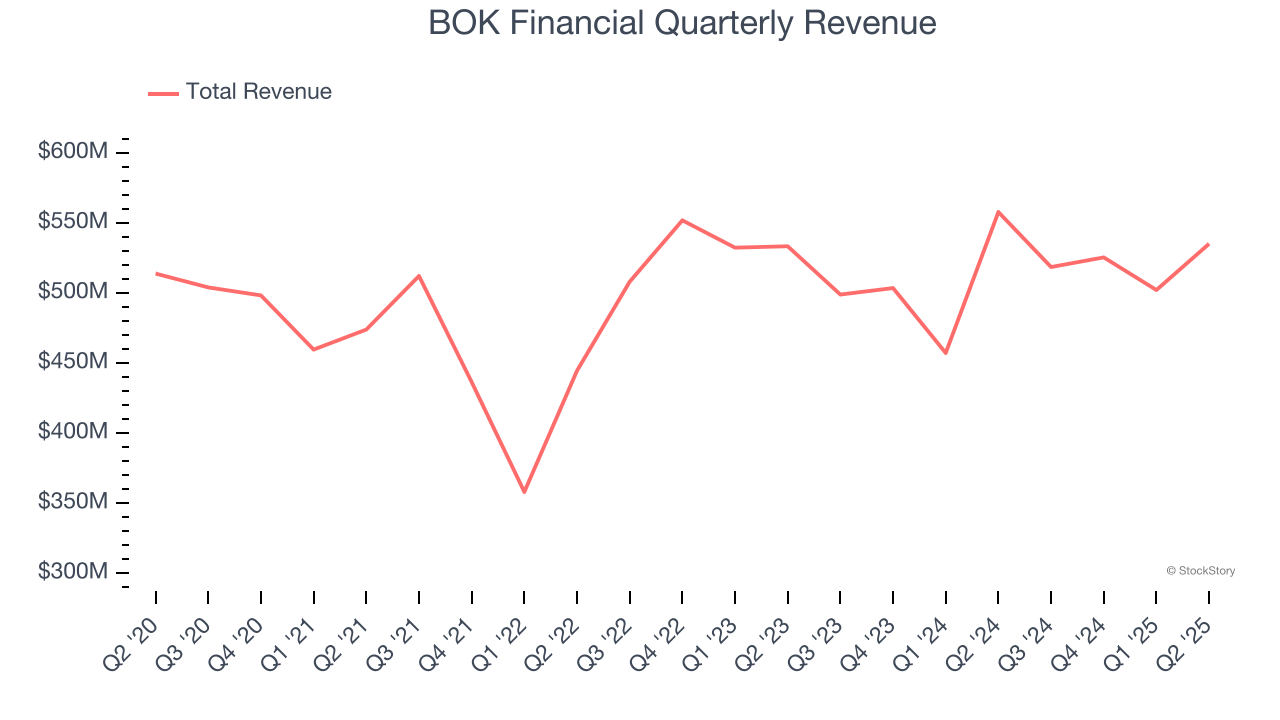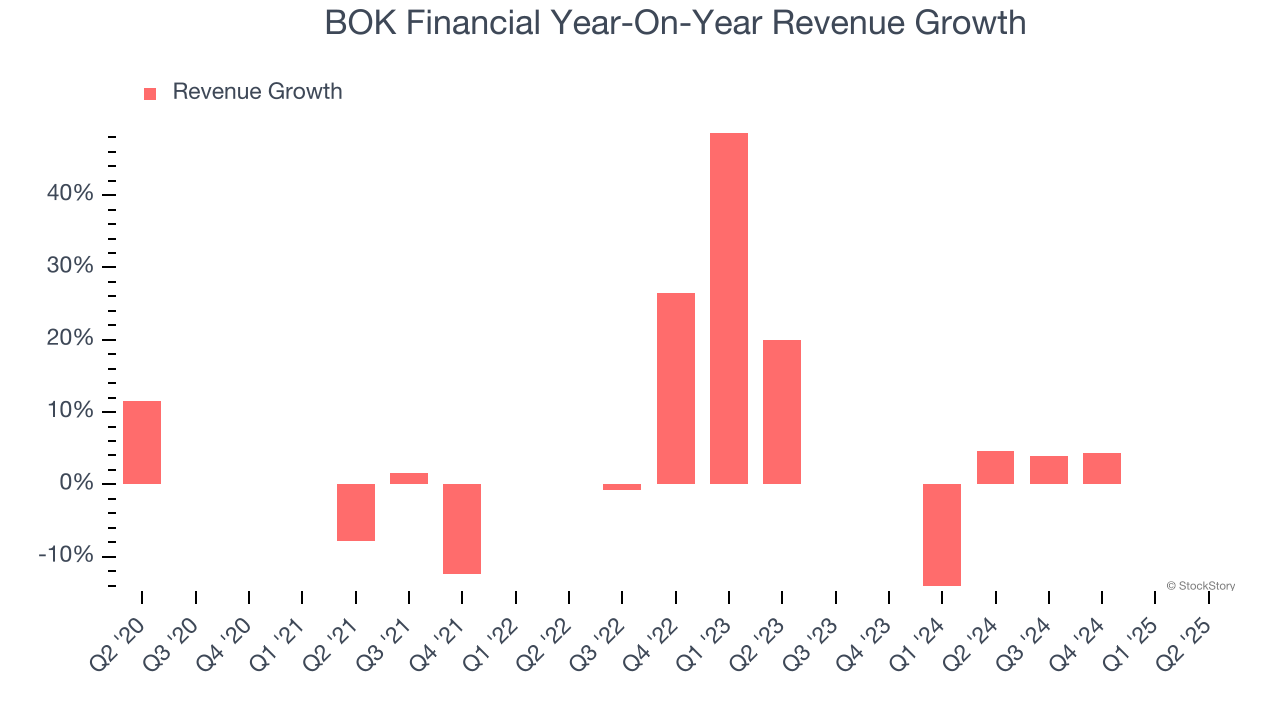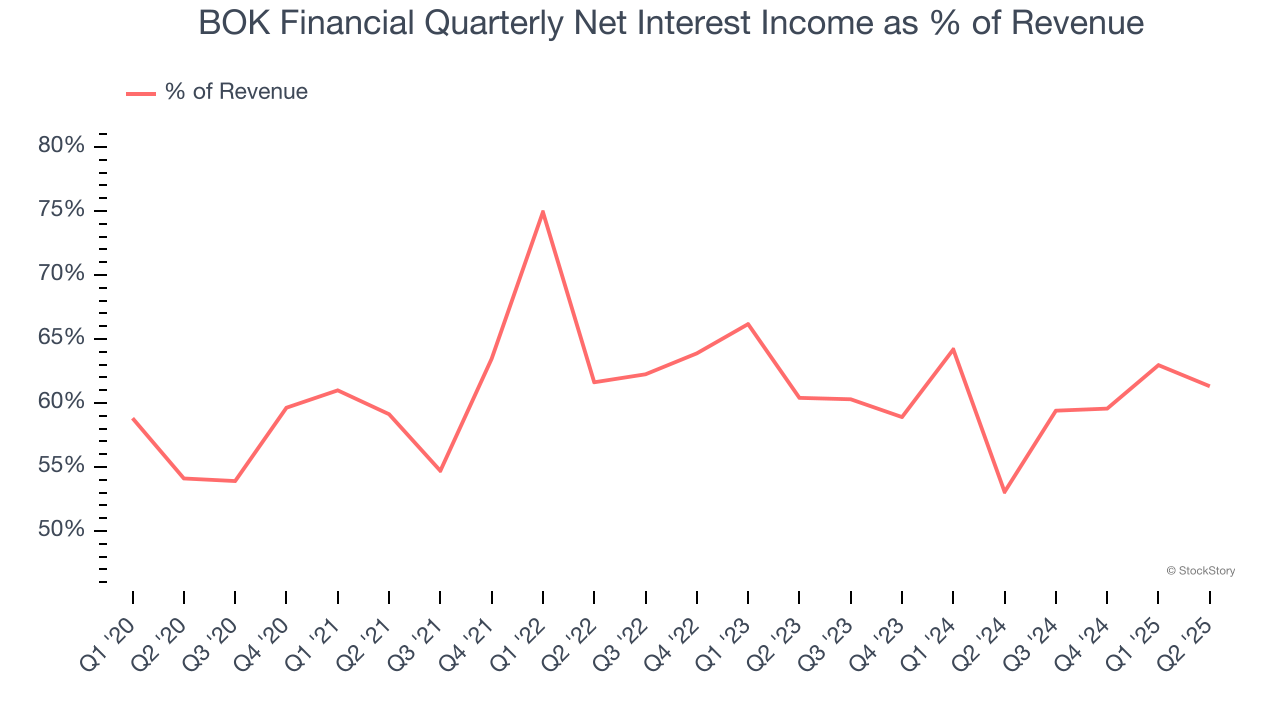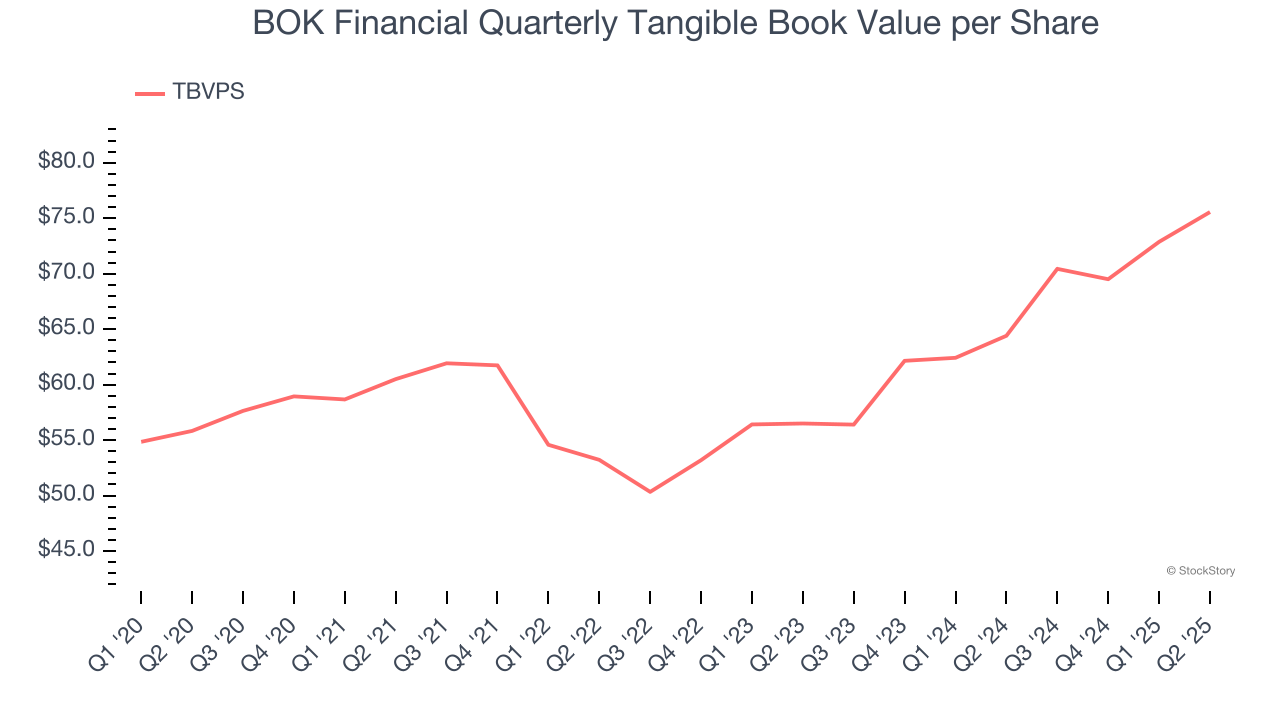
Regional banking company BOK Financial (NASDAQ: BOKF) reported Q2 CY2025 results topping the market’s revenue expectations, but sales fell by 4.1% year on year to $535.3 million. Its GAAP profit of $2.19 per share was 11% above analysts’ consensus estimates.
Is now the time to buy BOK Financial? Find out by accessing our full research report, it’s free.
BOK Financial (BOKF) Q2 CY2025 Highlights:
- Net Interest Income: $328.2 million vs analyst estimates of $324.4 million (10.9% year-on-year growth, 1.2% beat)
- Net Interest Margin: 2.8% vs analyst estimates of 2.8% (24 basis point year-on-year increase, 3.4 bps miss)
- Revenue: $535.3 million vs analyst estimates of $518.4 million (4.1% year-on-year decline, 3.3% beat)
- Efficiency Ratio: 65.4% vs analyst estimates of 67.6% (2.2 percentage point beat)
- EPS (GAAP): $2.19 vs analyst estimates of $1.97 (11% beat)
- Market Capitalization: $6.78 billion
Company Overview
Tracing its roots back to 1910 when Oklahoma was still a young state, BOK Financial (NASDAQ: BOKF) is a regional bank holding company that provides commercial banking, consumer banking, and wealth management services across eight states in the central and southwestern US.
Sales Growth
From lending activities to service fees, most banks build their revenue model around two income sources. Interest rate spreads between loans and deposits create the first stream, with the second coming from charges on everything from basic bank accounts to complex investment banking transactions.
Regrettably, BOK Financial’s revenue grew at a tepid 2.1% compounded annual growth rate over the last five years. This fell short of our benchmarks and is a poor baseline for our analysis.

Long-term growth is the most important, but within financials, a half-decade historical view may miss recent interest rate changes and market returns. BOK Financial’s performance shows it grew in the past but relinquished its gains over the last two years, as its revenue fell by 1% annually.  Note: Quarters not shown were determined to be outliers, impacted by outsized investment gains/losses that are not indicative of the recurring fundamentals of the business.
Note: Quarters not shown were determined to be outliers, impacted by outsized investment gains/losses that are not indicative of the recurring fundamentals of the business.
This quarter, BOK Financial’s revenue fell by 4.1% year on year to $535.3 million but beat Wall Street’s estimates by 3.3%.
Net interest income made up 61% of the company’s total revenue during the last five years, meaning lending operations are BOK Financial’s largest source of revenue.

While banks generate revenue from multiple sources, investors view net interest income as the cornerstone - its predictable, recurring characteristics stand in sharp contrast to the volatility of non-interest income.
Unless you’ve been living under a rock, it should be obvious by now that generative AI is going to have a huge impact on how large corporations do business. While Nvidia and AMD are trading close to all-time highs, we prefer a lesser-known (but still profitable) stock benefiting from the rise of AI. Click here to access our free report one of our favorites growth stories.
Tangible Book Value Per Share (TBVPS)
Banks operate as balance sheet businesses, with profits generated through borrowing and lending activities. Valuations reflect this reality, emphasizing balance sheet strength and long-term book value compounding ability.
This is why we consider tangible book value per share (TBVPS) the most important metric to track for banks. TBVPS represents the real, liquid net worth per share of a bank, excluding intangible assets that have debatable value upon liquidation. Other (and more commonly known) per-share metrics like EPS can sometimes be murky due to M&A or accounting rules allowing for loan losses to be spread out.
BOK Financial’s TBVPS grew at a solid 6.2% annual clip over the last five years. TBVPS growth has also accelerated recently, growing by 15.6% annually over the last two years from $56.50 to $75.56 per share.

Over the next 12 months, Consensus estimates call for BOK Financial’s TBVPS to grow by 7.4% to $81.14, mediocre growth rate.
Key Takeaways from BOK Financial’s Q2 Results
We enjoyed seeing BOK Financial beat analysts’ revenue, net interest income, EPS, and efficiency ratio expectations this quarter. Overall, we think this was a solid quarter with some key metrics above expectations. The stock remained flat at $106.50 immediately following the results.
So do we think BOK Financial is an attractive buy at the current price? When making that decision, it’s important to consider its valuation, business qualities, as well as what has happened in the latest quarter. We cover that in our actionable full research report which you can read here, it’s free.




